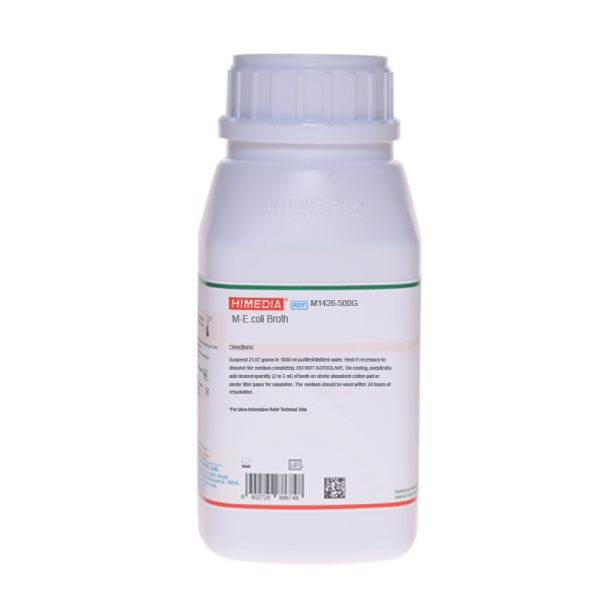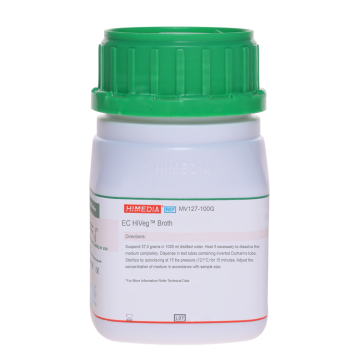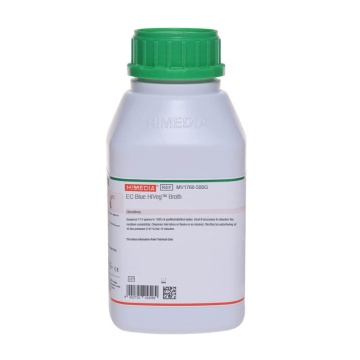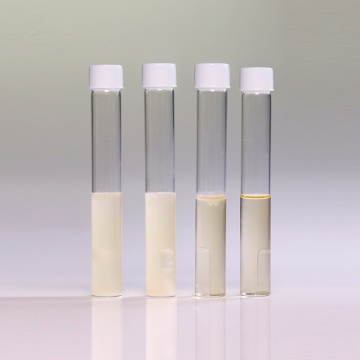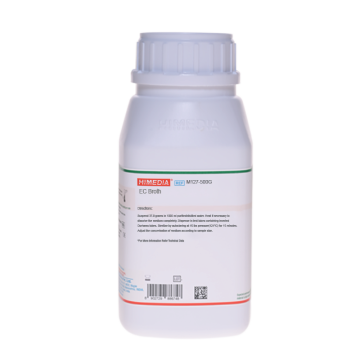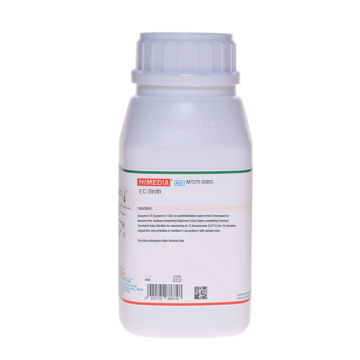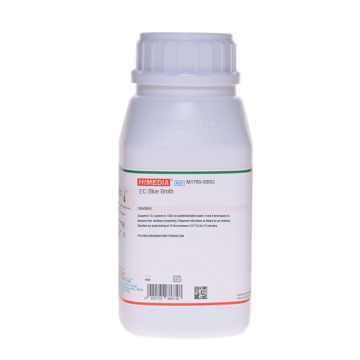 Your enquiry has been submitted
Your enquiry has been submitted
M - E. coli Broth
Intended Use
Recommended for the detection, differentiation and enumeration of Escherichia coli and coliforms in water samples using membrane filter technique without further confirmation.
Composition
| Ingredients | g/L |
|---|---|
| Tryptone | 20.000 |
| Bile salts mixture | 1.500 |
| Chromogenic mixture | 0.175 |
Final pH (at 25°C): 7.2±0.2
**Formula adjusted, standardized to suit performance parameters
Directions
Suspend 21.67 gram in 1000 ml purified/ distilled water. Heat if necessary to dissolve the medium completely. DO NOT AUTOCLAVE. Cool to 45-50°C, aseptically add desired quantity (2 to 5 ml) of broth on sterile absorbent cotton pad for saturation. The medium should be used within 24 hours of rehydration.
Principle And Interpretation
M-E.coli Broth is used for detection and differentiation of Escherichia coli and coliforms in water samples using membrane filter technique. It is based on Tryptone Bile Agar used for detection of Escherichia coli in foods (1) where recovery of Escherichia coli is faster, more reliable and accurate.
The water sample is filtered through membranes and then placed on pad saturated with M-E.coli Broth and incubated at 37° C in sealed Petri plates. The medium contains chromogenic mixture, which helps to detect glucuronidase activity of Escherichia coli (2). This specific enzyme differentiates Escherichia coli from other coliforms. Escherichia coli cells split the chromogenic mixture with the help of glucuronidase to give blue colouration to the colonies. Coliforms other than Escherichia coli turn red as they reduce TTC (2,3,5-triphenyl tetrazolium chloride). Thus, the resulting colour distinction allows simple interpretation of test without further confirmation. Tryptone provides the essential growth nutrients to the organisms. Bile salts inhibit gram - positive organisms.
Type of specimen
Water samples
Specimen Collection and Handling
For water samples, follow appropriate techniques for sample collection, processing as per guidelines and local standards (3). After use, contaminated materials must be sterilized by autoclaving before discarding.
Warning and Precautions
Read the label before opening the container. Wear protective gloves/protective clothing/eye protection/face protection. Follow good microbiological lab practices while handling specimens and culture. Standard precautions as per established guidelines should be followed while handling specimens. Safety guidelines may be referred in individual safety data sheets.
Limitations
- B-glucuronidase is present in 97% of E.coli strains, however few E.coli may be negative.
- Some species may show poor growth due to nutritional variations.
- Further biochemical and serological test are necessary for confirmation.
Performance and Evaluation
Performance of the medium is expected when used as per the direction on the label within the expiry period when stored at recommended temperature.
Quality Control
Appearance Light yellow to beige homogeneous free flowing powder
Colour and Clarity of prepared medium Light yellow coloured, clear solution without any precipitate
Reaction Reaction of 2.16% w/v aqueous solution at 25°C. pH: 7.2±0.2
pH 7.00-7.40
Cultural Response Cultural characteristics observed after an incubation at 35-37°C for 18-24 hours
| Organism | Inoculum (CFU) | Growth | Colour of Colony |
|---|---|---|---|
| # Klebsiella aerogenes ATCC 13048 (00175*) | 50-100 | luxuriant | red |
| Escherichia coli ATCC 25922 (00013*) | 50-100 | luxuriant | blue |
| Staphylococcus aureus subsp aureus ATCC 25923 (00034*) | >=104 | inhibited |
Key: (*) Corresponding WDCM numbers. (#) Formerly known as Enterobacter aerogenes
Storage and Shelf Life
Store between 15-25°C in a tightly closed container and the prepared medium at 2-8°C. Use before expiry date on the label. On opening, product should be properly stored dry, after tightly capping the bottle in order to prevent lump formation due to the hygroscopic nature of the product. Improper storage of the product may lead to lump formation. Store in dry ventilated area protected from extremes of temperature and sources of ignition Seal the container tightly after use. Product performance is best if used within stated expiry period.
Disposal
User must ensure safe disposal by autoclaving and/or incineration of used or unusable preparations of this product. Follow established laboratory procedures in disposing of infectious materials and material that comes into contact with sample must be decontaminated and disposed of in accordance with current laboratory techniques (4,5).
Reference
- Anderson J. M. and Baird Parker A.C., (1975), J. Appl. Bact., 39:111.
- Lipps WC, Braun-Howland EB, Baxter TE, eds. Standard methods for the Examination of Water and Wastewater, 24th ed. Washington DC:APHA Press; 2023.
- Hansen W. and Yourassawsky E., (1984), J. Clin. Microbiol. 20:1177.
- Isenberg, H.D. Clinical Microbiology Procedures Handbook. 2nd Edition.
- Jorgensen, J.H., Pfaller, M.A., Carroll, K.C., Funke, G., Landry, M.L., Richter, S.S and Warnock., D.W. (2015) Manual of Clinical Microbiology, 11th Edition. Vol. 1.
| Product Name | M - E. coli Broth |
|---|---|
| SKU | M1426 |
| Product Type | Regular |
| Physical Form | Powder |
| Origin | Animal |
| Packaging type | HDPE |
| References | 1. Anderson J. M. and Baird Parker A.C., (1975), J. Appl. Bact., 39:1 |
| Customized Product Available | No |



